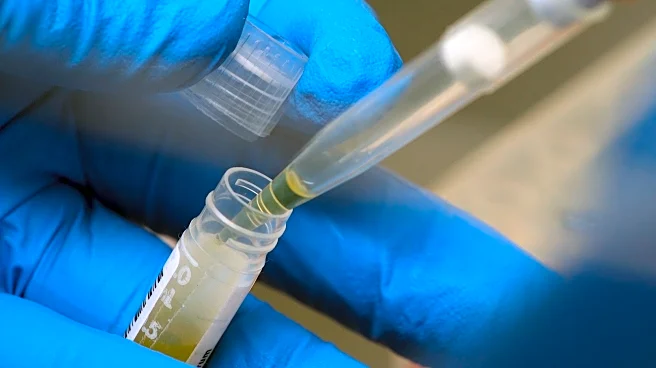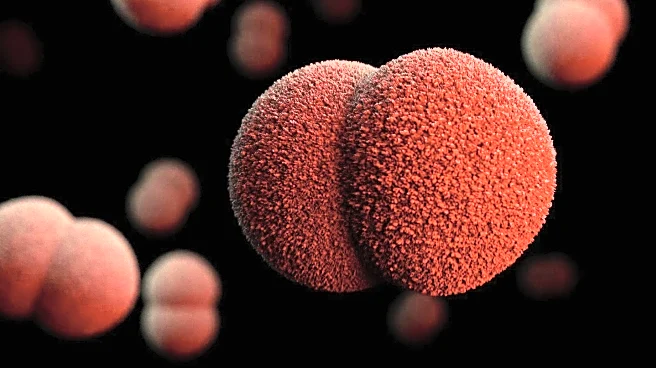What's Happening?
Researchers have mapped the structure of a bacteriophage, a virus that infects bacteria, providing new insights into its potential use against drug-resistant bacteria. Led by Dr. James Hodgkinson-Bean,
the study focuses on Bas63, a virus that targets E. coli, revealing how its tail functions during infection. The research highlights the promise of bacteriophages in 'phage therapy' as an alternative to antibiotics, especially as antimicrobial resistance rises. The study, published in Science Advances, also explores the evolutionary connections of bacteriophages, offering a detailed blueprint for medical, agricultural, and industrial applications.
Why It's Important?
The structural mapping of bacteriophages offers a promising avenue for addressing the growing challenge of antimicrobial resistance. As traditional antibiotics become less effective, phage therapy presents a viable alternative for treating drug-resistant infections. This research not only advances scientific understanding of bacteriophages but also supports their application in various fields, from medicine to agriculture. By providing a detailed blueprint of these viruses, the study enhances the potential for rational design in combating biofilms and pathogens, contributing to global health and food security.













